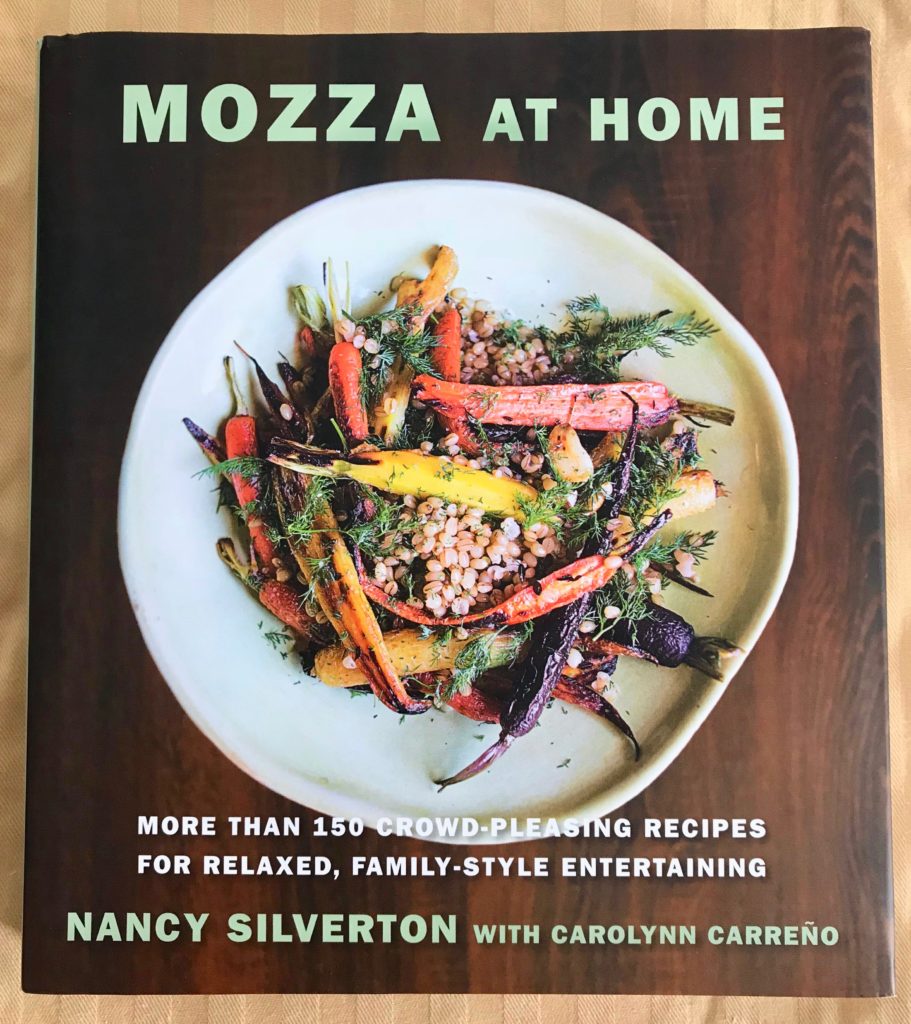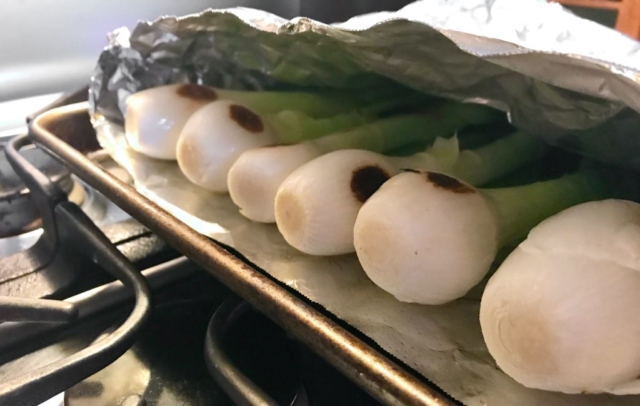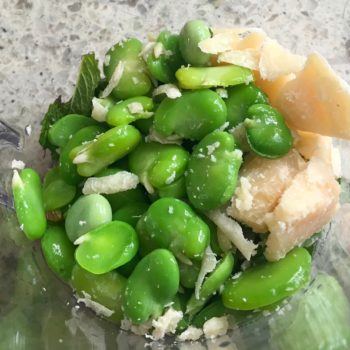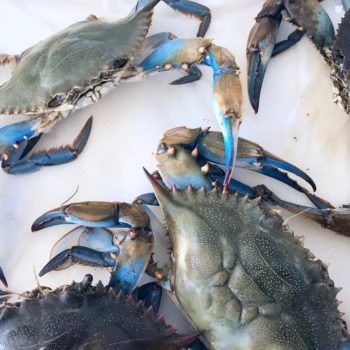
Mozza at Home
Nancy Silverton with Carolynn Carreño
Photographs by Christopher Hirsheimer
2016
Purchased from Artbook at Hauser and Wirth, Arts District, Los Angeles
Dishes cooked: Tomatillo salsa, roasted spring onions, perfect hard-cooked eggs, marinated summer squash salad, salsa rustica
Dishes I want to cook: Endive salad with date anchovy dressing; carrot and rice salad with ginger sumac dressing; Sal’s roasted pork shoulder; braised oxtails; green potato leek salad with scallion vinaigrette; pasta salad with bitter greens, Parmigiano cream, and guanciale
Difficulty to make: Medium
Difficulty to source: Easy
A Mozza at Home meal
Nancy Silverton is fun to watch in the open mozzarella kitchen at Osteria Mozza. She moves fast except to greet friends, of which there seem to be many. She’s mostly serious but has a great smile, and she’s beautiful always but radiant when she laughs. She jokes in Mozza at Home about being controlling with her cooking, and it pays off; a lot of people chose eating her food over cheering against Tom Brady, as my husband and I learned when we arrived to Pizzeria Mozza minutes after the surprise ending of the Super Bowl last winter to find the restaurant filled to the brim. And it’s brilliant food. I received poorly cleaned Trippa alla Romana at a restaurant recommended to us by friends in the Trastevere neighborhood of Rome on my honeymoon, and I longed for Nancy Silverton’s in its place. She would never, ever allow an ammonia smell an inch above her restaurant’s polished floors.
In Mozza at Home, Silverton offers not so much the dishes on her Mozza menus but the dishes she shares among her larger Mozza family. Many of the recipes come from her staff, from friends in Los Angeles and Umbria, and from restaurants with dishes she hopes to replicate and honor in doing so. She portions each recipe for six to eight, eight to ten, nine to twelve, or three to four dozen guests with the hope that you’ll prepare these dishes when you entertain, or, conveniently, a day or two before you entertain—many dishes can be cooked in advance and served at room temperature. (You’ll save yet more time thanks to her convenient table of contents with all recipes listed upfront.) Entertaining is not something we often do anymore, though, which she seems to acknowledge when assuring us that leftovers keep well in the refrigerator. I just expected to halve everything.
Using the cookbook as Silverton intended, for a dinner party
With almost 170 recipes divided into nineteen dinner parties, so to speak, with a protein main and complementary accompanying sides, and one desserts-only chapter, Mozza at Home is a tremendously helpful resource for ambitious hosts, home cooks with large families who want a substantial meat or vegetable dish to use throughout the week, and really anyone with a calculator for dividing good recipes into meals for one or two people—like me. But Silverton appeals to my host tendencies when she writes in her introduction,
“My idea in building the book this way isn’t that you make everything listed (which would be impossible or at least insane in some instances), but that you use the items listed as a guideline for what to serve with this main dish. These are flavors and textures that go well together and that wouldn’t offend me if I saw them all on one plate. I’m not a fan of potlucks for that very reason: people bring all kinds of things that don’t necessarily go with one another but that end up touching each other on guests’ plates. I do understand the appeal of the potluck in terms of easing the load for the host or hostess… I want to offer my friends and family not just great food, but a great experience.”
As an event manager and a home cook, I couldn’t agree more, and nor could friends and family who have been served a ginger potsticker at a barbecue and have had well-intentioned seven-layer dip arrive to their homemade sushi wrapping party.
Fittingly, I made the salsa rustica as an hors d’oeuvre with flatbread and crudités for a dinner party, a sort of sauce gribiche minus mustard plus almonds and anchovies, which Silverton was “introduced to what seems like a hundred years ago at the legendary Zuni Cafe in San Francisco,” before serving a meal that included slow roasted pork ribs, blackened salmon, and a variety of bright salads. It was all so very California. My guests were doing such an amazing job of socializing through the cocktail hour that the egg dip went mostly untouched, so I excitedly refrigerated it and ate it by the spoonful the next morning.
The marinated summer squash salad recipe includes a salt cure, honey, vinegar, a surprising combination of fresh herbs, and likely all of the aromatic seeds you keep in your pantry
Silverton is sensitive to how long certain processes will take and how difficult certain ingredients may be to find, but she implores her readers to persevere regardless. She’s hardly alone in that, but she’s more helpful than most. A number of recipes call for fresh chervil or fresh bay leaves, which I’m only now starting to see in the many Los Angeles grocery stores I shop. She suggests a mix of equal parts Italian parsley and tarragon as a substitute for the chervil and offers dried bay leaves as a fine alternative. White vinegar can be used in place of champagne vinegar, and provolone can stand in for real Cacio di Roma—but with these, I implore you to find the real thing. (If you live in Los Angeles, Guidi Marcello is heaven.) Silverton is also self-aware when she asks you to use a lot of something and provides additional uses for the remains, as when she suggests reusing oil for poaching tuna in a homemade mayonnaise for tuna salad, in her deconstructed Niçoise recipe.
The cookbook offers breadth, but a palate emerges. It helps to like salty, briny foods like anchovies and olives; alliums like onions and garlic; pickling elements like vinegars and mustard seeds; firm fishes like tuna and swordfish; and legumes like beans and chickpeas. (I’m thrilled that she has a soft spot for grouper, which, when treated right, can be as soft and silken as Patagonian toothfish, aka Chilean sea bass. Marketing!) Silverton specializes in Mediterranean food, so none of these should come as surprises, but I was a little surprised—these are strong flavors and textures. And yet, I ended up being surprised mostly at how appealing she makes the foods I don’t typically go for, like pickled peppers, firm fish cooked through, and the mealier of the beans. Prefacing a refried white beans recipe she got from her daytime sous-chef, Sal, with her typical sass, she writes,
“When Sal makes refried beans to go with his pork feast, because he is cooking from an Italian pantry, he uses white beans (cannellini) in place of traditional pinto beans, and prosciutto instead of lard. And let me tell you, he’s on to something. His are the best refried beans I’ve ever had.”
If it gets made, it will be the first time I’ve ever cooked beans at home instead of tolerating them when I’m dining out. Of course, there was that one time I had the white bean bruschette from Pizzeria Mozza, and secretly loved it.
–
Here are a few of my favorite well priced dinner party accessories, too:
Set of twelve stackable round white ceramic sauce or banchan dishes ($19)
Set of six gray cotton machine washable patterned placemats ($15)
Set of twenty adorable New Yorker cartoon cocktail napkins ($9)














